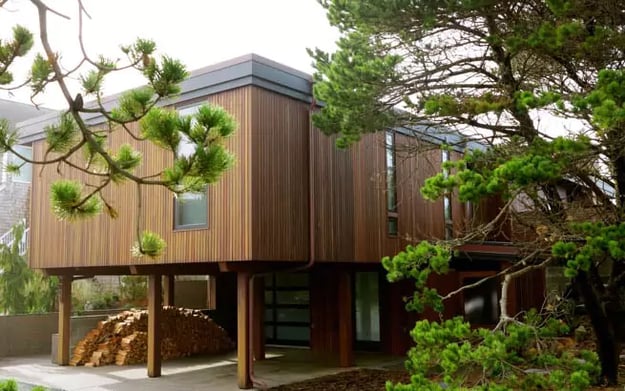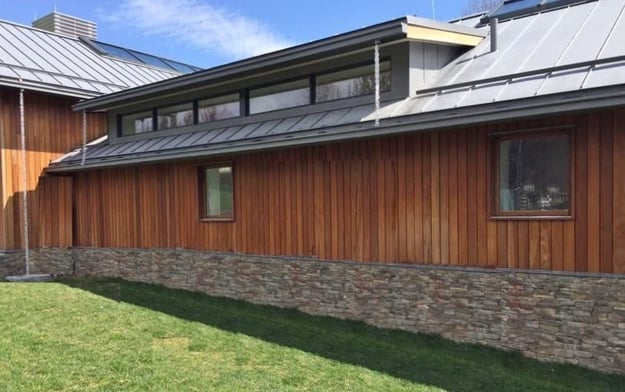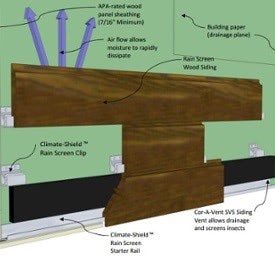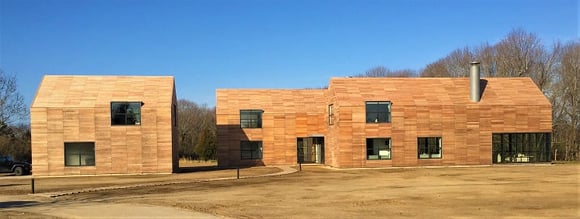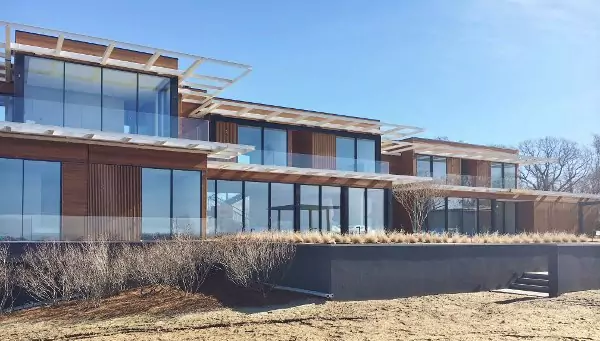
Most people in the building community understand what a rainscreen is. Simply put, it is a separation of the cladding of a building from the structure of the building. It’s like adding a second layer of protection against the elements. Why do we need it? Because water is trying to kill your house. While that may sound a little melodramatic, the truth is, water will make its way into any building eventually. How does this happen and what can you do to protect your home?
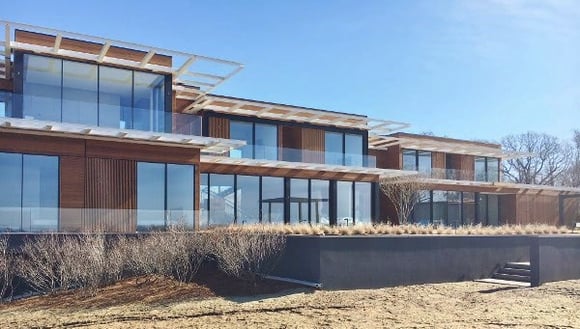
Trapped moisture between the cladding and wall will lead to rot and peeling finishes, increasing maintenance costs, and decreasing the longevity of the building. Perhaps most importantly, this trapped moisture also encourages the growth of mold both outside and inside a wall cavity. Installing a rainscreen system creates a separation between the cladding and the exterior wall. This helps the wood siding dry out. To understand why a rainscreen is important, it is helpful to understand how water makes its way in.
How Water Can Kill a Structure
First, I think we can all agree that, despite our best efforts as design professionals, contractors, and tradespeople, water will get into a building. The obvious culprits are gaps and leaks. Water gets in around windows and doors, between joints, etc. No matter how well designed, how tight our joinery, or how many precautions we take, water will find the weaknesses. But there are more insidious forces at work as well.
One of those forces is kinetic energy, which is a fancy way of saying wind driven rain. Wind pushes water into the cladding of a building with an amount of pressure corresponding to wind speed. For example, a 50 MPH wind exerts 6 pounds of pressure against the outside of the building. This has two effects. The first is it pushes water into all those little weaknesses we already know about.
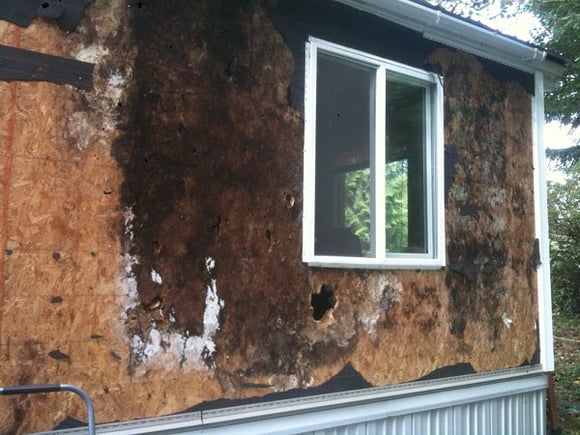
The second is it causes a pressure differential between the relatively high pressure pushing against the outside and the low pressure on the inside of the building. This is not only a pushing force from the outside, but a pulling force from the inside. The same force that propels a sailboat, that is, a pressure differential between the front and back of the sail which pulls the boat forward, can also pull water into a building.
Another issue is, once water is present, it moves on its own regardless of force. This is called capillary action and it doesn’t need air pressure or even gravity to occur. It's caused because the water’s adhesion to the surrounding material is stronger than the adhesion between the molecules of water. What is important is that once water creeps in, it will find its way into every fissure. In fact, the smaller the fissure the faster it moves. Think about your garden hose, the smaller the opening the higher the pressure.
Ready to see exterior design ideas using Rainscreen? Download the Wood Rainscreen Projects Portfolio now!
Finally, there's condensation. When warm air hits cold air or a cold surface some of the water vapor held in the air releases as liquid. The temperature at which this happens is called the dew point. Those of us in the Northeast are all too familiar with this concept. When we walk outside after a steamy summer night and everything is dripping wet, we know we hit the dew point. This happens inside our wall cavities as well. The issue is somewhat compounded by the fact that we like the insides of our homes to be the opposite of what’s going on outside, warm in the winter, cool in the summer. Without a way for this moisture to drain and evaporate, we have problems.
How Does a Rainscreen Help?
The reality is, there is nothing we can do to eliminate these outside forces or to curb the nature of water. What we can do is manage it. This is where a rainscreen comes into play. The first line of defense is the screen itself, that is the wood siding. It is a physical barrier against the elements. The second is the airspace behind the siding, and this is the key.
The airspace breaks the capillary action. By separating the cladding from the building there is nowhere for the water to go once it reaches the backside of the siding material. Bear in mind, there must be a minimum 3/8 inch space because water can also bridge small air gaps.
More About Rainscreen Installation here
Secondly, a properly ventilated, open joint rainscreen creates a pressure equalized system which will negate the push and pull forces of wind and temperature. The airspace also creates a thermal break so that a warm building is separated from the cold cladding keeping condensation away from the building. Finally, any moisture that finds its way into the wall cavity has the space and air flow to dry out, preventing rot and mold.
Hey, What About the Building Wrap?
Protect your investment. The final line of defense is the house wrap, also known as a weather resistive barrier (WRB) or air and water barrier (AWB). Selecting the right WRB for your home or building is a critical decision. There are lots of high performance WRB’s on the market today, and many are far better than the original ones that were introduced in the early ‘90’s. They protect your home longer and are absolutely worth the slightly higher cost. Choose the one that works best for your project needs.
A common misconception is that because you are installing a rainscreen, that building wraps are not as necessary anymore. Nothing can be further from the truth. A rainscreen is the first line of defense. The best rainscreen systems are often ‘open joint’ systems. They allow water in – and let it out. That’s why WRB’s are more important than ever. So, as the final line of defense, a properly installed WRB is crucial. Don’t leave any gaps and protect all seams and flashed areas.
The Climate Shield Wood Siding System is designed to work with and help address all of these issues. Climate Shield rainscreen clips, starter rails and other components are made of marine grade extruded aluminum and are built tough, able to withstand winds up to 200 mph, making them suitable for any environment. Because this system allows airflow across the entire wall, unlike wooden furring strips, the Climate Shield system is truly pressure equalized. When used with attachment channels or Z-Girts, there's a solution for any situation, commercial or residential.
Before you go! Download more design ideas using wood rainscreen with our Featured Project Portfolio now!

Related Posts
